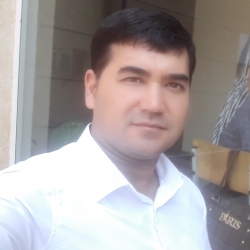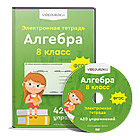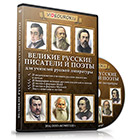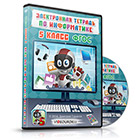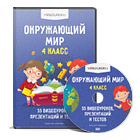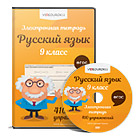The role of modern pedagogical technologies in music education and its need today.
Annotation: If we connect the concept of technologicalization directly with pedagogical processes, then the implementation of the laws of education, the achievement of a common goal based on the discovery of specific aspects of their new laws - a person of a harmoniously developed generation with positive qualitative changes formation is understood. Or pedagogical technology can be understood as a systematic process of organizing, managing and implementing education, projecting new qualitative changes in the individual, guaranteeing the expected result.
This article provides students with information about the role of modern pedagogical technologies in music education in higher education and its need today.
Keywords: society, music, music education, technology, methodology, pedagogy, technological map, personality, youth education, music methodology.
Introduction. Scientific and technological progress in the development of society leads to the technologicalization of production. At the present time, the process of technologicalization is rapidly entering our lives.
If we connect the concept of technologicalization directly with pedagogical processes, then the implementation of the laws of education, the achievement of a common goal based on the discovery of specific aspects of their new laws - the formation of a harmoniously developed generation with positive quality changes . Or pedagogical technology can be understood as a systematic process of organizing, managing and implementing education, designing new qualitative changes in the individual, guaranteeing the expected result.
The concept of technology is derived from the Greek word "techne", which means skill, craft and "logos" - concept, doctrine.
Technology is a set of systematic methods that lead to a change in product quality in the production of effective means.
Pedagogical technology is a systematic way of creating, applying and defining the whole process of teaching and learning, taking into account human and technical resources and their interaction in order to optimize educational models. (UNESCO)
"Pedagogical technology is the design of a system of continuous development of pedagogical activity aimed at educational goals and personal development" (N. Azizkhodjaeva).
Pedagogical technology is an innovative approach to the educational process. It is an expression of socio-engineering thinking in pedagogy, a concept related to the creation of an optimal project, bringing the process of teaching and education to a certain standard. In particular, the use of computers, technical means of education, the manager, organizer, advisor of the student's cognitive activity, the passenger-teacher, the teacher to achieve the final result. The organization of independent work of the program and, most importantly, the ability of the teacher to achieve almost the same result.
This is especially important in the current period of training of specialists who can meet the requirements of the standards of all countries of the world, where a single state educational standards have been introduced. When the educational process is organized on the basis of pedagogical technologies, educational goals are set or projected, the expected end result is a positive change in quality, a repetitive cycle of the learning process is created, there is a rapid feedback, learning objectives, learning the necessary adjustments can be made to the process.
The idea of the project of standardization of the pedagogical process on the basis of thinking was born in the XVI century Slavic pedagogue Ya.O. It was put forward by Comenius. In his famous work, The Great Didactics, he sought to standardize the educational process, in which "every method and thing had to be placed in time" so that the whole pedagogical process would run smoothly like a well-tuned clock. it was necessary. ” The great pedagogue YA Comenius dreamed of the twentieth century and created pedagogical technologies. In the 21st century, this social reality is called innovative pedagogical technologies and serves as a guide for educators around the world.
Summarizing the pedagogical technologies used in practice, they can be classified as follows.
- Pedagogical technologies based on humanism and democratic pedagogical relations (formation of personal relations, individual approach, democratic governance, humanities-oriented technologies)
- pedagogical technologies based on activation and acceleration of learners (such as game technologies, problem-based learning, communicative learning technologies)
- Pedagogical technologies based on the effective organization and management of the teaching process (such as program teaching, differential teaching technology, individual teaching, perspective teaching, group and collective teaching technology, information technology)
- Pedagogical technologies in the methodical comparison and didactic reconstruction of educational material. (orderly technology of formation of mental movement, technology of strengthening of didactic unity, etc.).
- Technologies based on folk pedagogy.
It is impossible to make non-traditional types of lessons the main form of work and use them without purpose. Interactive methods, which are considered in the research of psychologists and educators around the world as the methods of the 21st century, not only fulfill the task of training highly qualified teachers for modern schools, but also accelerate this process and improve the quality of education. Here is what it says.
The method of "rotation of the gallery". All members of small groups are offered a problem. Each group writes down their thoughts on the problem within the allotted time and exchanges the answer sheets with the other group. The recipient evaluates the answers and, if incomplete, fills in their options. The groups' opinions are then summarized and the correct and perfect answers are selected to earn the highest score.
Snowstorm method. Divided groups of students discuss together to find the most correct answers to a problem. Each correct answer is recorded in the form of a round snowball for that group; groups are evaluated based on the total number of points earned.
The "bee swarm" method. The problem is discussed in one group or in two small groups. Assignments can be different or one for the whole group. The groups discuss the problem for a while and share the results with others. The best option for solving the problem is selected.
The method of "rolling snow pile". The Snowball method is a symbolic name for the teaching method, which begins with giving students time, resources, and handouts to reflect on the problem at hand. This method involves each member of the group expressing his or her comprehensive point of view using the knowledge and experience of the whole group. To do this, students are divided into 4 small groups. All groups are given one assignment to discuss. Each small group works on the task separately. The first, second, third, and fourth groups then discuss the problem together. Eventually, several small groups come together to discuss different ways and options to solve the problem as a whole. In the process of such discussion, students' knowledge on the problem is deepened, enriched and expanded.
"Syndicate" method. The group is divided into three subgroups. In doing so, the proposed task needs to be addressed from three different perspectives. For example, if three unknowns are given the task of solving a system of three equations, then the first group solves the problem using the Gaussian method, the second group by Kramer, and the third group by the Matrix method. The solutions are then discussed and summarized.
"Aquarium" method. Three students from the group are asked to sit around a table in the middle of the room and discuss the problem together for about ten minutes. These three students are like fish in an aquarium. Observers sitting around listen carefully to the students' opinions, write down the answers correctly and incorrectly, and express their views during the discussion. Students in the middle who are not able to comment sufficiently give their seats to observer students who have a strong opinion. Opinions on each problem are summarized by the teacher with the participation of students.
"Digital" methods. One of the 4x4x4, 5x5x5, 6x6x6 methods is used depending on the total number of students in the groups. For example, in the 5x5x5 method, 5 small groups of 5 students each are formed, and 5 of their leaders discuss the problem together, then return to their groups and teach their partners how to solve the problem.
Ajurli saw method. Openwork is derived from the French word "ajour", which means "from one side to the other, open on both sides".
The use of this method is carried out in the following stages:
- Small groups of 4-5 students are formed;
- The assignments given to students and the text materials used in their performance are cut into several main parts (for example, several topics on the basis of the plan);
- A package of topics and text materials on them will be distributed to each member of the small group;
-small group members begin to complete the task using text materials;
- An expert group will be formed from well-versed members of small groups;
- members of the expert group discuss the tasks in their hands and have a plan to teach others;
-Experts go back to their original small groups and teach what they have learned to other partners.
This approach to teaching allows students to work together and master a large amount of learning materials.
Using this method, the educator predicts that students will need to carefully study the materials presented for the assignment, discuss them together, ask and answer questions, and share what they have learned with others.
"Synectics" method. This method is suitable for practical, seminar and laboratory classes, and is close to the "brainstorming" method. In this case, the student puts forward his ideas and views on the solution of the problem in the classroom, based on the analogy. The analogy can be direct, personal, symbolic, or imaginary.
Round table method. This method is convenient for practical training. The teacher presents a small question sheet to the small group.
Students write their names and answers to the question and pass the sheet to the student next to them. In this way, the written answers are collected, the incorrect ones are erased with the participation of students, and the results are evaluated.
The "pen on the table" method. This method is suitable for practical training. A small group of students, who have written their answer to the question, place the pen on the table and pass the sheet to the partner next to them. A student who cannot write a question will not put the pen on the table. The answers to the same question from students in several small groups are collected and discussed together. The advantages of this method are: the teacher sees who is not ready for the lesson; a student who is not prepared for the lesson will gain a lot of useful knowledge on the topic under discussion during the oral discussion; this method is a small group work that strengthens and consolidates student discipline because a student who thinks long and hard about his or her answer option spends time allotted to the whole group. Also, if the student is not ready for the lesson, he / she will give a reason to the group; students analyze their answers twice, during written work and during oral discussion.
"Rotation" method. This method is used so that each small group discusses the topic of the lesson individually, analyzes what they have written as a whole, and is done in the following steps;
- Assignments on the topic of the lesson (for example, topics in the plan) are written on posters and hung on the board;
- If the number of tasks is three, students are divided into small groups and subgroups are numbered;
-small groups receive a task with a number corresponding to their numbers and a package of written information used in its performance;
-small groups study the materials presented to them together and write their answers to the task;
-Answers in a small group are written by a beautiful student;
- The answer sheet to the task, the data package is exchanged and added in small groups, but the repetition of the answers is not allowed;
It is recommended that they use different colored pencils to distinguish which subgroup the answers belong to.
Roundtable method. Roundtables are a way of teaching between students and in small groups around a round table with feedback.
When using the roundtable method, tables and chairs should be arranged in a circle. This will help each student establish an "eye contact" with each other. There are oral and written forms of roundtable discussions. In the oral roundtable, the teacher introduces the topic and asks the students to give their opinions on the topic, and each student in a circle gives his or her opinion orally. The student listens attentively to the student, and if there is a need to discuss, all feedback is discussed after the hearing. This helps students to think independently and develop a culture of speech.
In the written roundtable discussion, tables and chairs are arranged in a circle and each student is given an envelope. Each student asks a question on a specific topic on an envelope and passes it to the student next to them. Receive an envelope - the student writes his answer on a piece of paper, puts it in an envelope and passes it to the student next to him. All envelopes move in a circle. In the final section, all envelopes are collected and analyzed.
Advantages of the roundtable method:
• helps to remember the material well;
• All students interact;
• Each student feels responsible for their participation;
• have the opportunity to express themselves freely.
The "business game" method. Business game is a method of imitating (imitating) the management decisions made in different situations according to the given tasks or prepared by the participants of the game.
The game activity is given by imitating the behavior and social responsibilities of the participant participating as a representative of any organization. On the one hand, if the game is controlled, on the other hand, the participants will have the opportunity to change their activities according to the intermediate results. Therefore, the process of task performance is individual - group. Each participant first decides on their task and then consults with the group. Achieving the goal of this individual task depends on the results achieved by the whole team. At the end of the game, each participant and group will be evaluated based on their results.
Advantages of the "business game" method:
• Helps to express students' knowledge and experiences through their views and behaviors;
• a good opportunity to mobilize the student's basic knowledge and experience;
• Students will be able to demonstrate their abilities based on their knowledge.
Reference text method. Reference text is a way for students to independently collect, plan, and implement information using reference questions.
The text of the "reference text" is closely related to the design. These two methods can be distinguished from each other in the following ways:
• The “reference text” method focuses on students' independent learning;
• The ‘design’ approach, in addition to students ’independent learning, focuses on improving the personal skills and competencies needed in vocational learning.
It is recommended to use the "Reference text" method in practice lessons. The steps for implementing this method are the same as for the design method. During the data collection, planning, implementation, and verification phases, a “feedback loop” is established between the student and the teacher and discussed together. Students will be given a written statement prepared by the teacher at the elementary level. Such documents include technical drawings, tables, reference questions, handouts, worksheets, evaluation sheets, and more.
Advantages of the "reference text" method:
• leads to the formation of skills and abilities of students;
• develops students' independent learning skills;
• develops students' communication and self-assessment skills;
• Develops students' skills such as action planning, independent decision making.
The "problem situation" method. A problem situation is a way for students based on analyzing problem situations and finding solutions to them. The complexity of the task chosen for the “problem situation” method should be appropriate to the students ’level of knowledge. They need to be able to find a solution to the problem, otherwise when they fail to find a solution, the students lose interest and lose their self-confidence.
Advantages of the "problem situation" method:
• develops students' independent thinking skills;
• students learn to find causes, differences, and effects;
• a good opportunity to assess students' knowledge and experience;
• Students learn to analyze ideas and results.
The "mental attack" method. Brainstorming is a way of generating ideas. Brainstorming is the most effective way to solve a problem by gathering free ideas and feedback from students. There are written and oral methods of brainstorming. Each student expresses his / her opinion orally to the question asked by the teacher in oral form. Students state their answers clearly and concisely. In writing, students write their answers on a piece of paper in a short and visible way. The answers are fastened to the board (using magnets) or to the “pinboard” board (using needles). In the written form of the "brainstorming" method, it is possible to group the answers according to certain characteristics. When used correctly and positively, this method teaches a person to think freely, creatively and non-standardly.
Brainstorming is an opportunity to engage all students, including a culture of communication and discussion. Students develop the ability to express their opinions not only orally but also in writing, and the ability to think logically and systematically. Failure to critically evaluate the ideas expressed can lead to a variety of ideas in students. This method serves to develop creative thinking in students.
The "brainstorming" method is based on the goal set by the teacher:
1. When the goal is to determine students' basic knowledge, this method should be used in the introductory part of the lesson.
2. When the goal is to repeat a topic or to link one topic to another, it is done in the transition to a new topic.
3. When the goal is to reinforce the topic covered, it is best to do it in the reinforcement section of the lesson after the topic.
Advantages of the "brainstorming" method:
• Failure to evaluate the results leads students to form different opinions;
• all students participate;
• ideas are encouraged;
• students have the opportunity to check their basic knowledge;
• Students may be interested in the topic.
Role-playing method. Role-playing is a way for students to demonstrate a variety of life situations. The difference between role-playing games and business games is that there is no final evaluation. In role-playing games, too, the participants work together to solve a problem. Role-playing games develop students' interpersonal skills.
At the end of the game, students are given the opportunity to explain how they can play the role they have played. Students who are observers will give their final feedback and summarize the game.
In a role-playing game, the teacher needs to know about the students in advance. Because the individual character and behavior of each student plays an important role in role-playing. The topics chosen should be appropriate to the students' level of mastery.
Advantages of the role-playing method:
• helps to motivate students in the learning process;
• develops interpersonal skills in students;
• teaches to apply theoretical knowledge in practice;
• Students develop the ability to analyze a given situation.
Zig-zag method. The Zig-Zag method aims to enable students to work with a variety of literature and texts in and out of class, to memorize and narrate what has been learned, to express themselves freely, and to evaluate all participants in one lesson. In this technology, handouts are mastered by participants individually and in groups, and the level of mastery of the text is monitored through dialogue, discussion, and various questions, and the activity and mastery of small groups is quickly assessed.
The zig-zag method is performed in several stages:
Step 1. Organize small groups of 4-5 people and distribute the text of the study topic to the groups according to the number of groups. (Each group will be given a separate task, handouts should be given to each participant)
Phase 2. Texts given to group members are studied by participants individually and then independently with the group
Step 3. Number sheets (numbers must match the number of small group members) are drawn by small group members.
Step 4. Participants of the same number in each subgroup gather around a separate table. At this stage, each participant participates as both a teacher and a student.
Explains the material she has learned as a teacher to her classmates. As a student, she studies texts explained by her partners. The group members check each other out with questions. Assessment can take the form of groups asking each other questions or in the form of tests, questions, or presentations.
Advantages of this method: The ability to independently absorb large material in terms of volume.
Strengthen the teamwork of each team member in small groups.
The “debate” method. Debate is a method of teaching students in two groups in the form of discussions and exchanges of ideas on a topic. This method is used when any topic or problem is discussed on the basis of existing knowledge and experience. One student can be assigned to lead the discussion. The discussion should be open to students and efforts should be made to involve each student in the discussion. When this method is used, it is necessary to try to immediately resolve the "conflicts" that arise between students.
Conclusion. Everyone who creates the bright future of independent Uzbekistan, who contributes to the independence of the Motherland, must be culturally rich and spiritually beautiful. The development and future of our free country depends on the youth. At a time when national spirituality and enlightenment are re-emerging, in the development of our ideology, we must educate young people in the aesthetic spirit as a person of high quality in all respects through our lifelong musical art. Of course, the role of the family, kindergarten, school and out-of-school educational institutions is invaluable. One of the most important factors that have a significant and effective impact on the development of the individual, the development of culture is music education. Because music helps to develop a person who is kind, sincere, intelligent, cheerful, highly moral and has a spiritual culture.
List of used literature.
1. Fayziev O. Nurturing delicacy in music. Navoi. 1996 y.
2. Kadyrov R. Singing loudly in primary school. T.1989 y
3. Sharipova G. Handbook of music culture in grades I-II, III-IV, V-VII. T. 2001 y.
4. Sharipova G. Methods of teaching music (text of the lecture). T. 2004 y.
5. Omonullaeva D., X.Nurmatov, M.Mamirov. General Secondary Education DTS and Curriculum. –T. 199 y.




